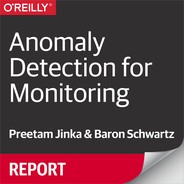Foreword
Monitoring is currently undergoing a significant change. Until two or three years ago, the main focus of monitoring tools was to provide more and better data. Interpretation and visualization has too often been an afterthought. While industries like e-commerce have jumped on the data analytics train very early, monitoring systems still need to catch up.
These days, systems are getting larger and more dynamic. Running hundreds of thousands of servers with continuous new code pushes in elastic, self-scaling server environments makes data interpretation more complex than ever. We as an industry have reached a point where we need software tooling to augment our human analytical skills to master this challenge.
At Ruxit, we develop next-generation monitoring solutions based on artificial intelligence and deep data (large amounts of highly interlinked pieces of information). Building self-learning monitoring systems—while still in its early days—helps operations teams to focus on core tasks rather than trying to interpret a wall of charts. Intelligent monitoring is also at the core of the DevOps movement, as well-interpreted information enables sharing across organisations.
Whenever I give a talk about this topic, at least one person raises the question about where he can buy a book to learn more about the topic. This was a tough question to answer, as most literature is targeted toward mathematicians—if you want to learn more on topics like anomaly detection, you are quickly exposed to very advanced content. This book, written by practitioners in the space, finds the perfect balance. I will definitely add it to my reading recommendations.
